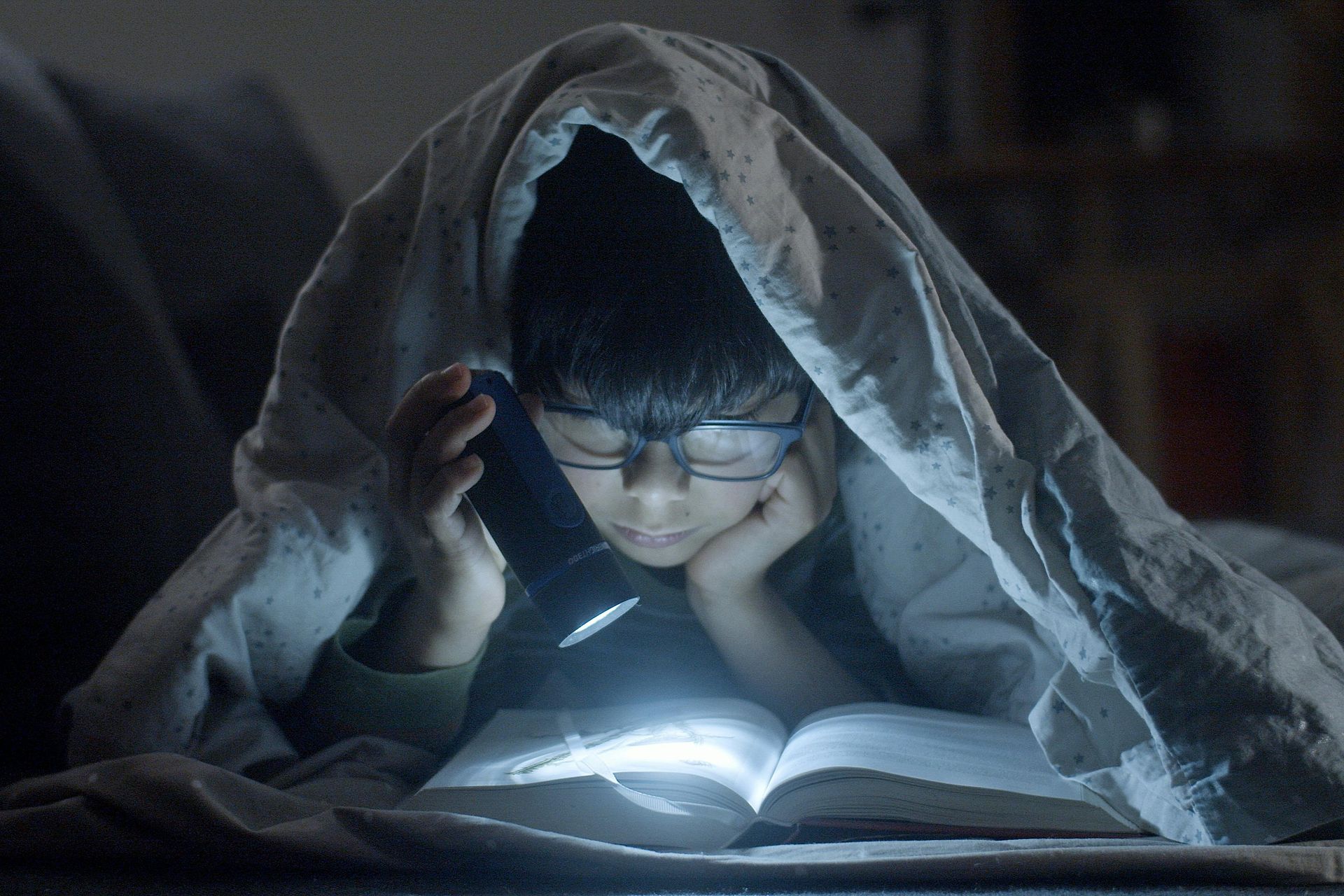Your Small Business Needs More Than a Website—It Needs a Digital Backbone
And no, slapping together a basic site and calling it a day won't cut it anymore.
Let me guess: you've got a website that's been "good enough" for the past few years, maybe a Facebook page you update when you remember, and you're wondering why your competitor down the street is suddenly everywhere online while you're still waiting for the phone to ring.
Here's what's actually happening: your competition isn't just the shop down the street anymore. It's every business with a smartphone, a decent Instagram feed, and the audacity to show up online consistently. The good news? Building a rock-solid digital presence isn't rocket science, but it does require more strategy than most business owners think.
If you're still treating your online presence like that gym membership you keep meaning to use, it's time for a reality check. Your digital footprint isn't just a nice-to-have; it's your 24/7 sales rep, your credibility booster, and often the first (and sometimes only) impression potential customers get of your business.
Ready to stop playing digital hide-and-seek with your ideal customers? Let's fix this.
Stop Building Websites Like It's 2015
Your website isn't a digital brochure gathering dust in cyberspace; it's your business headquarters. And just like you wouldn't run your physical location with burnt-out lightbulbs and a broken door, your site needs to actually work for people.
Platform reality check: Everyone's got opinions about WordPress vs. Squarespace vs. Wix , and honestly? They're all fine starting points. But here's what actually matters: pick something you (or your team) can manage without having a breakdown every time you need to update your hours. The best platform is the one you'll actually use. Revolutionary, I know.
Mobile-first isn't a suggestion anymore. Over 60% of web searches happen on mobile devices. If your site looks like a hot mess on a phone, you're not just losing visitors; you're telling them you don't care about their experience. That's not the vibe we're going for here.
Make the important stuff embarrassingly easy to find. Contact info buried three clicks deep? Amateur hour. Your phone number, address, and clear service descriptions should be front and center. Think of your homepage like a good first date: put your best foot forward, but don't make people work to figure out who you are and what you do.
SEO: Not As Scary As You Think (But Don't Wing It)
Search engine optimization gets a bad rap for being technical and mysterious. It's not. It's basically teaching Google's robots what you do so they can introduce you to people who need exactly that. Think of it as the world's most efficient matchmaker.
Keyword research without the overthinking: What would you type into Google if you needed your own services? Start there. If you're a Portland-based dog groomer, phrases like "dog grooming Portland" or "pet spa near me" aren't rocket science; they're common sense. Use them naturally in your content, not like you're trying to game the system.
Meta titles and descriptions are your search result pickup lines. You've got about three seconds to make someone click on your result instead of the other guy's. "Best Dog Grooming in Portland | Happy Paws Spa" beats "Home - Dog Services" every single time. Make it count.
Blog because Google loves fresh content (and so do your customers). You don't need to become Shakespeare; just share what you know. Answer questions your customers actually ask. Show some personality. A dog groomer writing about "5 Signs Your Pup Needs Professional Grooming" isn't just SEO-friendly ; it's genuinely helpful. Win-win.
Your Google Business Profile: The Unsung Hero
If local customers matter to your business (hint: they probably do), your Google Business Profile is pure gold. It's free advertising that puts you on the map, literally.
Claim it, fill it out completely, and keep it fresh. Outdated hours are the digital equivalent of a "Back in 5 minutes" sign that's been up for three weeks. Not cute. Not professional. Just confusing for everyone involved.
Photos matter more than you think. Show your space, your team, your products in action. People want to know what they're walking into. Stock photos of generic handshakes don't count, and your customers can spot them from a mile away.
Reviews are your reputation in real-time. Encourage the good ones (yes, it's perfectly okay to ask satisfied customers to leave reviews). Respond to the not-so-good ones professionally. Show potential customers you actually care about the experience you deliver. Novel concept, right?
Social Media: Pick Your Battles Wisely
Here's a secret: you don't need to be everywhere. You need to be where your customers are, and you need to show up consistently. Quality over quantity isn't just a cliché; it's survival.
Platform strategy over platform quantity. A bakery crushing it on Instagram with drool-worthy photos beats the same bakery posting sporadically across five platforms. Find your sweet spot and own it. Your sanity will thank you.
Content that actually connects: Behind-the-scenes content, customer stories, quick tips, anything that reminds people there are real humans behind your business. Save the hard sales pitches for your paid ads. Social media is about building relationships , not broadcasting announcements.
Engagement isn't optional. Social media isn't a broadcasting channel; it's a conversation. Reply to comments, answer questions, be a human. It's called social media for a reason. Revolutionary thinking, I know.
Email Marketing: Still Undefeated
Email has been declared dead more times than a soap opera character, yet it keeps delivering the highest ROI of any marketing channel. Funny how that works when you actually do it right.
List building isn't creepy when you provide value. Offer something useful, a guide, a discount, insider tips, in exchange for someone's email. Then actually deliver value, not just promotional noise. Shocking concept: give people what you promised them.
Segmentation separates the pros from the amateurs. Your newsletter subscribers probably want different content than someone who just bought from you last week. Treat them accordingly. It's called respecting your audience's intelligence.
Consistency beats perfection. A monthly newsletter that actually goes out monthly is infinitely better than the "perfect" campaign you never send. Done is better than perfect, especially in marketing.
Paid Advertising: Strategic Spending, Not Slot Machine Pulls
Online ads can be incredibly effective or incredibly expensive, depending on how smart you are about them. Choose wisely.
Start small, learn fast. Set a budget you won't lose sleep over, pick one platform, and actually pay attention to what works. Throwing money at Facebook ads and hoping for the best isn't strategy; it's gambling. And the house usually wins.
Target like your business depends on it (because it does). The beauty of digital advertising is you can get ridiculously specific about who sees your ads. A 35-year-old dog owner in Portland who's interested in organic pet food? Yep, you can find them. Use that superpower.
Test, measure, adjust. The first version of your ad probably won't be your best. That's fine; it's supposed to be your starting point, not your finish line. The magic happens in the tweaking.
Data Without Drama: Track What Actually Matters
Analytics don't have to be overwhelming. You just need to track the stuff that actually impacts your business. Revolutionary, I know.
Google Analytics is free and tells you what you need to know: Who's visiting your site, how they found you, what they do once they're there. Start with the basics before you dive into advanced metrics that'll make your head spin.
Listen to your customers. Sometimes the most valuable insights come from actual conversations, not dashboards. Pay attention to the feedback you're getting; it's market research you didn't have to pay for.
Adjust based on evidence, not hunches. If your Instagram posts are getting way more engagement than your Facebook ones, maybe it's time to double down on Instagram. Let the data guide your decisions, not your personal preferences.
The Bottom Line (And It's Pretty Simple)
Building a strong online presence isn't about doing everything perfectly from day one. It's about showing up consistently, providing value, and actually caring about the experience you create for people. Radical concept, right?
Your business deserves more than a half-hearted digital presence. It deserves a strategy that works as hard as you do. Because here's the thing: your competitors are already figuring this out. The question is, are you going to join them or keep waiting for the "perfect" moment?
Ready to stop playing small with your online presence? Let's talk about turning your digital strategy from an afterthought into your biggest competitive advantage.
At Zossoz , we help businesses like yours cut through the digital noise and build brands that don't just look good; they work hard. Because your business deserves better than generic templates and crossed fingers.









